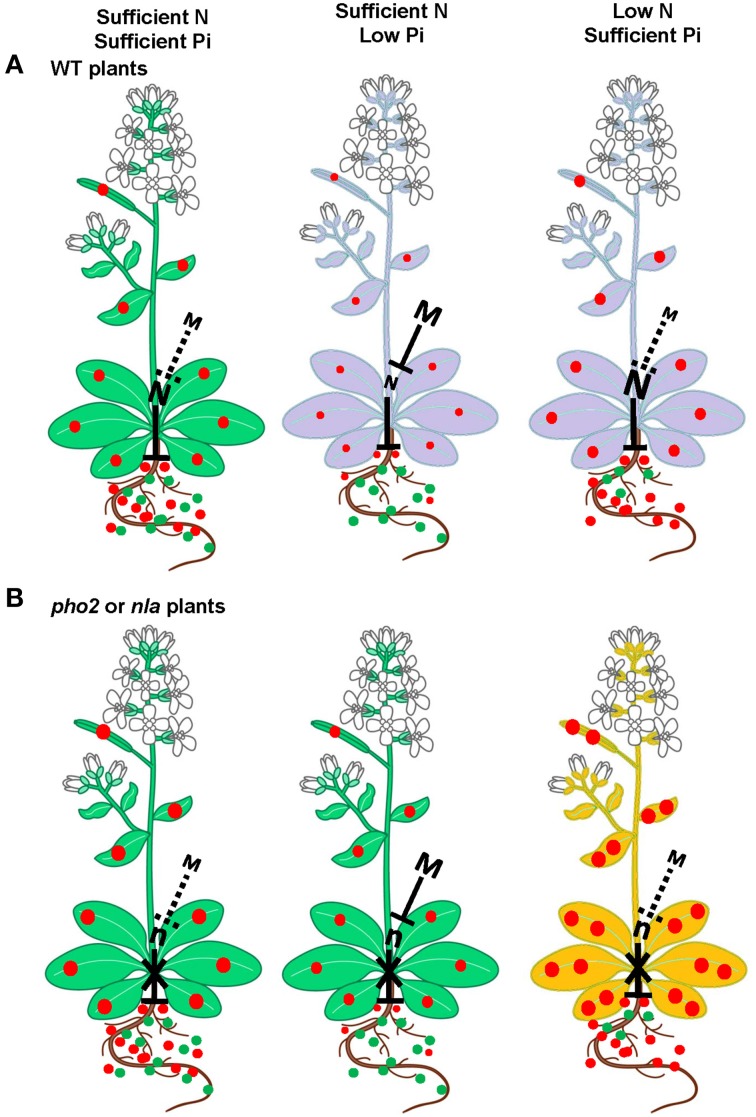Figure 1.
Hypothetical model for the role of miR399 and miR827 to maintain Pi homeostasis in plants. (A) In WT plants, PHO2 and NLA act as repressors for Pi uptake and these genes are targets of miR399 and miR827, respectively. Under sufficient N and Pi supply plants grow normal and under low N or Pi supply plants accumulate anthocyanin. (B) In pho2 or nla mutants, the PHO2 or NLA gene are not functional and these plants have higher Pi uptake in general compared to WT plants. Under sufficient N and Pi supply, mutant plants grow normal like WT. Under sufficient N and low Pi supply, since PHO2 or NLA gene are non-functional thereby letting more Pi uptake resulting in normal plant growth of these plants. Low N and sufficient Pi conditions accelerate excessive Pi accumulation causing Pi toxicity in these mutants. Purple leaves show N or Pi deficiency leading to anthocyanin accumulation, orange leaves indicate Pi toxicity. Dotted lines indicate less suppression. The size of the letter M or N correlates with expression level. The size and number of the solid green and red circles correlates with N and Pi concentration, respectively. M, miR399 or miR827; N, PHO2 or NLA (adapted from Kant et al., 2011b).

